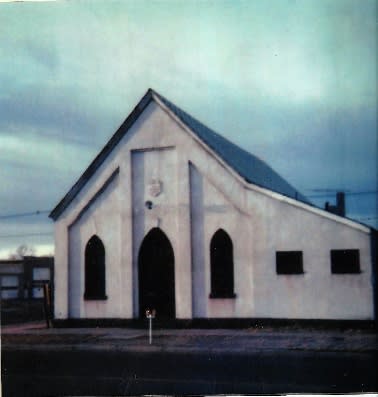<<Read Time: 6 Minutes>>
Whistles pierced the air, and steam billowed around the tracks as the first passenger train pulled into the Cheyenne Depot on November 13, 1867.
An energy of anticipation and potential flooded onto the platform with the disembarking passengers, looking to begin a new life in this “Magic City of the Plains,” Cheyenne.
Lucinda “Lucy” Phillips, a laundress, stepped off the train, looking around at the modest wooden depot and the rows of temporary buildings and tents. A long, full skirt swishing around her ankles, the aging woman saw the opportunity in this land that would later become known as the Equality State.

Original Cheyenne Train Depot, c.1868
Was Wyoming a Free State?
Since its inception Wyoming has always been a free state, and a free territory before that. Even before Wyoming was called Wyoming, by way of territory or state, in the days of being part of the Louisiana Purchase and unorganized territory, Wyoming was always considered to be a land free from slavery.
Having spent 59 of her 62 years on earth as an enslaved person, Mrs. Phillips now stood free with her husband and daughter in a brand new city, far from her Kentucky roots, with the rest of her life in front of her. This is her story.
Early Life of Lucinda “Lucy” Phillips
Born into slavery in Woodford County, Kentucky, in 1804, Lucy spent the first 59 years as human property of various white families in Kentucky, Virginia, and Missouri. Despite the horrible circumstances, she found measures of happiness in her life. She married fellow enslaved person LeGrand Phillips in 1842 and gave birth to her only daughter, Susan.
LeGrand toiled hard and eventually “earned” his freedom, where he worked his way across the plains and mountains to the west coast, acquiring $4000 for his labors. Hurrying back, he purchased the freedom of Lucy and Susan in 1863, just before they were sold to an owner in the deep south of Mississippi.
Lucy Phillips Arrives in Cheyenne
At ages 59 (Lucy), 45 (LeGrand), and 22 (Susan), the Phillips family was free in the eyes of the law, even before the end of the Civil War. When the opportunity to move to a brand-new city in the West arose in 1867, the family took it and arrived on the first passenger train to Cheyenne, Dakota Territory.
To ensure that their marriage held up in the eyes of the law, LeGrand and Lucy decided to get married again in Cheyenne in 1868, granting them the very unusual claim to fame of being married twice without a divorce in between! Their union lasted until 1877 when, as LeGrand’s obituary from 1884 said, “the old man had become somewhat reckless in many respects, and at last his wife was compelled to procure a divorce from him.”
Lucy Phillips & Her Contributions to Cheyenne
Lucy, as a prominent figure in the Cheyenne Wyoming black population, wasted no time in investing herself in the growth of the city. She established the first garden in Cheyenne with Judge Slaughter (a white man assigned as the justice of the peace for town) and began buying and selling properties throughout her time here. Her name appears repeatedly in the county clerk records, wheeling and dealing property. As an unmarried black woman, she exemplified the West's opportunities for everyone!
Establishment of the African Methodist Episcopal Church
However, her most famous land transaction did not yield a monetary profit. Upon her arrival, Lucy initially attended the First Methodist congregation for several years. By 1875, she felt the black community needed a place to call their own. As a result, she helped establish the first congregation of the African Methodist Episcopal (A.M.E.) church in Wyoming Territory in 1878 – one that still exists today, over 140 years later!
Given the growth of the Cheyenne Wyoming black population, the congregation grew so rapidly that they needed a larger building within twelve years. Lucy personally donated the plot of land where the church constructed a brick church (Allen Chapel) that was used from 1885 to 1981! Today, the church still regards Lucy as its founding mother and continues to be a gathering place for the African American community in Cheyenne.

Original AME Allen Chapel, Cheyenne, Wyoming
Advocacy for Equal Rights in Cheyenne
While life in the West was far from the life of an enslaved person, people of color still had a decent dose of prejudice to navigate. In 1885, a petition circulated and was submitted to the school board, demanding a separate school be built for the black students in the city.
Lucy, her daughter Susan, and several other women in the community formed a committee and wrote to the Cheyenne Daily Sun, vocalizing their objections. The March 31, 1885 issue of the newspaper published an article highlighting the women's objections and backed their stance, stating, "THE SUN has only to say that it does not believe the school board will be foolish enough to entertain any proposition involving unnecessary expense, stirring up discord, and so manifestly uncalled for as this one to establish a separate colored school. There are less than fifty colored pupils in the city. The reference of the petition to a committee was but a polite way of consigning it to the wast (sic.) basket."
Over the following days, many letters to the editors of the papers in town posed their arguments for both sides of the issue. Still, the voices of support and integration of the children of Cheyenne rang out loudly, thanks to these female advocates.
Looking Back: Lucy’s Life in Cheyenne
As Lucy aged, her eyesight eventually failed, ushering in the end of her gardening days. Her dog, Coley, was her constant companion for 27 years (yes, twenty-seven years!) Her guardian and vision, friends knew that in order to approach Lucy, one first needed to make nice with Coley. "Grandma Phillips" (as the community referred to her) engaged in lively conversation and offered a great perspective on the developments of the 19th century.
The War of 1812, the Mexican-American War, the Civil War, and the Spanish-American War (not to mention the ongoing conflict with Native American tribes), and the significant expansion westward all fell within her lifetime. She also had the opportunity to become acquainted with many famous people, including the outlaw Jesse James and his brothers, the abolitionist John Brown, and the United States President Abraham Lincoln. But her favorite to recount was the great meteor shower she witnessed in her late twenties.
Unsurprisingly, as an enslaved person living in the eastern portion of the United States, the night of November 12-13, 1833, impacted her deeply. Historical accounts estimate 10,000 bright meteors per hour fell during the early morning of the 9-hour event, and many people thought the end of the world was upon them!

Woodcut depiction of 1833 meteor storm by Adolf Vollmy
In Lucy's four decades here - nearly a second lifetime - she witnessed Cheyenne's transformation first-hand. She claimed residency in the Dakota territory, the Wyoming territory, and the Wyoming state – all from her humble home at 519 W. 18th Street (no longer standing). A dreamer and doer, the 106-year-old woman had an incredible impact on her community, even after passing in 1910. Ethnicity, gender, and background did not keep her from pursuing her goals, and Cheyenne is better for it.
In an article celebrating her 105th birthday, the Wyoming Semi-Weekly Tribune reported Lucy took "an active interest in all things that pertain to the advancement of Cheyenne, and her pleasure at knowing the city is increasing in population and importance is real and genuine." Undoubtedly, she would be amazed to see the Magic City of the Plains today and the fingerprints she left on the community still visible.
Sources:
Cheyenne Weekly Leader, September 29, 1881
Cheyenne Daily Sun, March 31, 1885
Wyoming Semi-Weekly Tribune, April 27, 1909
Wyoming Semi-Weekly Tribune, May 10, 1910
https://www.historicwyoming.org/profiles/allen-chapel
http://genealogytrails.com/ill/stars.htm
Explore More of the History of Cheyenne, Wyoming
Cheyenne has much more history waiting to be explored! From the Old West to Cheyenne’s Military Heritage, take a look at a few other interesting stories about Cheyenne’s wild history below.

